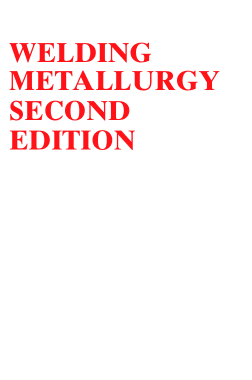

Oxidation with the use of sulphides can produce the same effect. Copper can also become black by heating it. In earlier texts, it could possibly also refer to darker-than-copper bronze, an alloy of copper and tin. There is also some controversy if the term syamayas ("black metal) refers to iron or not. The Atharva Veda and the Satapatha Brahmana refer to krsna ayas ("black metal"), which could be iron (but possibly also iron ore and iron items not made of smelted iron). There are many references to Ayas in the early Indian texts. The Arthashastra also refers to counterfeit coins. The Director of Mines is responsible for the inspection of mines. It is the duty of the Director of Metals to establish factories for different metals. The Arthashastra lays down the role of the Director of Metals, the Director of Forest Produce and the Director of Mining. It can mean both copper-bronze and iron and, strictly on the basis of the contexts, there is no reason to choose between the two."

There is no positive evidence either way. Chakrabarti (1992) argued: "It should be clear that any controversy regarding the meaning of ayas in the Rgveda or the problem of the Rgvedic familiarity or unfamiliarity with iron is pointless. Vedic people had used Copper extensively in agriculture, Water purification, tools, utensils etc., D. Scholars like Bhargava maintain that Rigved was written in the Vedic state of Brahmavarta and Khetri Copper mines formed an important location in Brahmavarta. The references to Ayas in the Rig Veda probably refer to bronze or copper rather than to iron. In RV 4.2.17, "the gods smelting like copper/metal ore the human generations". The Rig Veda refers to ayas, and also states that the Dasyus had Ayas (RV 2.20.8). The Sanskrit term Ayas means metal and can refer to bronze, copper or iron. The Moslems took much of this Hindu chemical science and industry to the Near East and Europe the secret of manufacturing "Damascus" blades, for example, was taken by the Arabs from the Persians, and by the Persians from India." Hindu, Buddhist, Jain and other texts The tempering of steel was brought in ancient India to a perfection unknown in Europe till our own times King Porus is said to have selected, as a specially valuable gift for Alexander, not gold or silver, but thirty pounds of steel. By the sixth century the Hindus were far ahead of Europe in industrial chemistry they were masters of calcinations, distillation, sublimation, steaming, fixation, the production of light without heat, the mixing of anesthetic and soporific powders, and the preparation of metallic salts, compounds and alloys.

"Something has been said about the chemical excellence of cast iron in ancient India, and about the high industrial development of the Gupta times, when India was looked to, even by Imperial Rome, as the most skilled of the nations in such chemical industries as dyeing, tanning, soap-making, glass and cement. Will Durant wrote in The Story of Civilization I: Our Oriental Heritage: The resulting high-carbon steel, called fūlāḏ فولاذ in Arabic and wootz by later Europeans, was exported throughout much of Asia and Europe. In this system, high-purity wrought iron, charcoal, and glass were mixed in crucibles and heated until the iron melted and absorbed the carbon. Perhaps as early as 300 BCE, although certainly by 200 CE, high quality steel was being produced in southern India by what Europeans would later call the crucible technique. It extended from the upper Gangetic plain in Uttar Pradesh to the eastern Vindhya range and West Bengal. It is dated to roughly the 12th – 9th centuries BCE, and associated with the post- Rigvedic Vedic civilization.

The Black and Red Ware culture was another early Iron Age archaeological culture of the northern Indian subcontinent. Sahi (1979: 366) concluded that by the early 13th century BCE, iron smelting was definitely practiced on a bigger scale in India, suggesting that the date the technology's inception may well be placed as early as the 16th century BCE. Archaeological sites in India, such as Malhar, Dadupur, Raja Nala Ka Tila and Lahuradewa in the state of Uttar Pradesh show iron implements in the period between 1800 BCE - 1200 BCE. Recent excavations in Middle Ganga Valley done by archaeologist Rakesh Tewari show iron working in India may have begun as early as 1800 BCE. 7 Colonial British Era-Republic of India.2 Hindu, Buddhist, Jain and other texts.


 0 kommentar(er)
0 kommentar(er)
